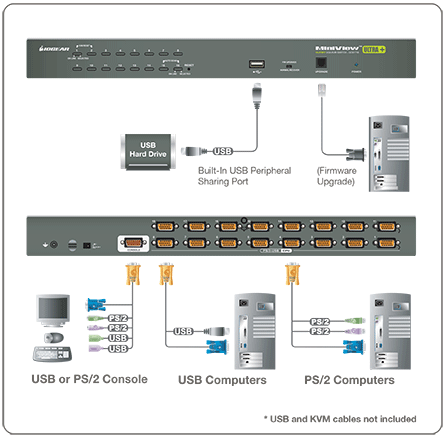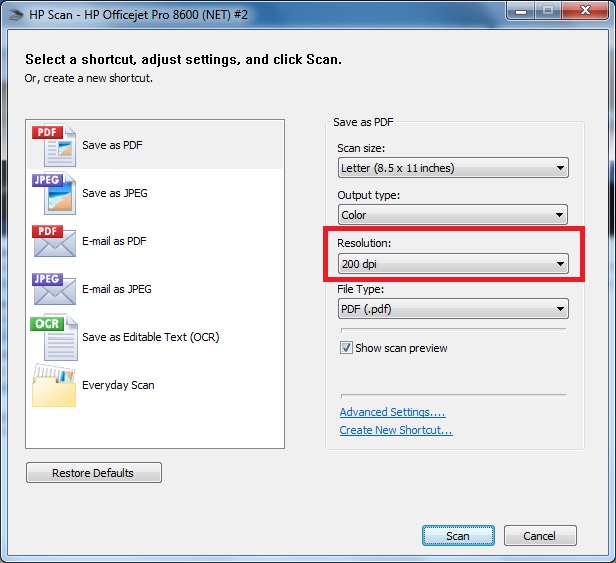Recommended Kvm For Windows And Mac

I am mostly interested in developing for windows (primary) and a mac. I have a normal PC and a mac mini, and I want to be able to use a single keyboard, mouse and a monitor with both. What software switcher (KVM) do you use for multi platform development? I think the best software solution is to physically connect the Mac to.
For many, the Windows-versus-Mac debate is a moot point. An increasing number of users who previously found themselves in one camp or the other now are firmly straddling the fence. For some it’s purely a personal choice, having been swayed towards the Mac because of the iPhone Halo Effect, or perhaps enticed by an inexpensive Windows netbook. For others, their work demands that they use both platforms. The commonality between these users is that many of them try to cram two systems onto a desk that’s barely big enough for one.
For those who simply don’t have the space for two systems—or even those who just don’t want to clutter their workspaces—there are a number of solutions. One is to eschew a separate Windows system altogether and run Windows on the Mac in a Boot Camp partition. The primary disadvantage with this is that you can’t run Windows and the Mac OS at the same time—you have to restart the system and boot into the other OS every time you need to switch.
Another option is to run Windows using virtualization software on the Mac, such as Parallels Desktop for Mac ($79.99 direct), VMWare Fusion ($79.99 direct), or VirtualBox (free). Virtualization is a rather elegant solution, but in order for it to work effectively, you need an Intel-based Mac, with a relatively powerful processor, lots of RAM, and plenty of hard drive space to spare.
Perhaps the simplest solution—and one that doesn’t require ditching your Windows system—is to invest in a hardware-based KVM switch. As its name suggests, you can plug in the keyboard, display, and mouse connections of several computers, which it then routes to a single keyboard, monitor, and mouse. You simply push a button or a keyboard hotkey to switch from one connected computer to another. But KVM switches are not ideal for everyone: Some involve a lot of bulky cables; a decent model, such as the Iogear GCS1762, can easily cost around $150; and they’re not much good if one of your systems has a built-in display.
But why bother with a pricey hardware-based KVM switch when you can use a virtual KVM switch for free? Not only does a virtual KVM switch not add any more cables, it actually reduces the number of cables you already use. Another advantage a virtual KVM switch has over a physical one is that you can easily use a virtual KVM switch with a system that has a built-in display. So if you are a multiplatform user who might benefit from the space-saving abilities of a virtual KVM switch, read on for a detailed guide for how to set one up between your Mac and Windows systems.
- 1 of 8
As personal computers become more affordable, consumers are finding it financially feasible to use two or more PCs side by side. This allows for more flexibility, such as storing memory-gobbling music and digital photos on one desktop while using the other for everyday tasks like email and word processing.
Some people might want to keep sensitive, work-related documents on one machine, freeing up another for the kids to use. Or, fearing viruses and spyware, more and more folks are keeping their sensitive files on one PC that isn’t connected to the Internet, and using a second, connected PC for online tasks.
And thanks to Apple Computer’s $499 Mac mini computer, many curious Windows users and long-time Mac owners alike have purchased the company’s most inexpensive computer as a companion to a main PC.
But these added computers extract hidden costs, beyond the price of the extra PC itself. They normally require their own monitor, keyboard, mouse and speakers, and they can double the desktop space devoted to computing — space not every home has to spare.
There is a creative solution to this problem. It’s technically possible to run two (or more) computers — even mixed combos of Windows and Macintosh machines — using a single, shared monitor, mouse, keyboard and speaker set. But until recently, only techie geeks and office information-technology departments were familiar with the gadget that allows such sharing: a KVM switch.
MiniView Micro USB PLUS 2-Port KVM Switch by Iogear Inc., $69.95,www.iogear.com
KVM is an acronym for Keyboard, Video and Mouse — the three basic things that can be shared when a KVM switch is used to connect computers. In recent years, KVMs have become less expensive and easier to set up, making them more popular among everyday people. A simple KVM is a small, often boxy-shaped device with cables running to it directly from the keyboard, mouse and monitor, and then out from the KVM to each computer.
To switch from one computer to the other, you either press a button on the KVM or use “Hotkeys” — shortcut strokes on your computer keyboard. A few seconds after the switch button is pressed, your monitor displays the desktop or currently opened program on the other computer without stopping the activity of the first computer. For example, if you had just started downloading something on one computer, you can switch to the second computer while waiting for that to finish.
This week, my assistant Katie Boehret and I tested a pretty basic KVM switch sold by Iogear Inc., a popular KVM maker from Southern California. Other companies, including Belkin and Avocent, make KVMs, but they all work in the same general manner.
Katie uses an old, bulky, costly KVM to switch between two computers in her office every day, so she was anxious to see what one of the newer, smaller and less-expensive KVMs had to offer.
We tested Iogear’s $69.95 MiniView Micro USB PLUS 2-Port KVM Switch in two situations: between two Windows PCs and between a Windows PC and Apple’s Mac mini. The Mac mini is a perfect candidate for a KVM because it doesn’t come with a monitor, mouse, keyboard or speakers. The Iogear MiniView that we tested also is designed to work with Linux and Sun Solaris computers, as well as between two Apple computers, though we didn’t test these scenarios.
Katie and I found the MiniView Micro easy to set up and very simple to use, and we were jumping back and forth between desktops shortly after removing the KVM from its packaging. If you have more than one computer set up in the same desk area, and you’re still using different speakers, keyboards, mice and monitors for each, your work routine can be dramatically simplified with this little gadget.
Rtl8211cl gigabit lan drivers for mac. Iogear sells a variety of KVMs at prices that vary according to the features. Its least-expensive model goes for about $40, while the most expensive KVM, which can handle eight computers, costs $500. KVMs that connect to a keyboard and mouse using older “PS/2” connectors cost less than those that connect using newer USB ports. If you would like your KVM to control audio for each computer, which ours did, that also ups the price.
Next month, Iogear will introduce KVM switches with faster USB 2.0 ports that will cost $250 and $350 for two- and four-port devices, respectively. Currently, all of Iogear’s USB-compliant KVMs use USB 1.1 connections, which are much slower.
On Iogear’s Web site, www.iogear.com, a handy KVM wizard program walks you through the various types of computers and add-ons that you use, recommending the best KVM for you.
In our test, the setup for both combinations of computers was the same: We attached our monitor, speakers, USB keyboard and USB mouse directly to the KVM, then used the permanently attached cables (some KVMs come with removable cables) to hook into each computer’s ports for monitor, speaker and USB connection. We then turned the two computers on and waited for a brief second while the monitor resolution adjusted before displaying the screen of our currently used computer.
To configure VPN access on your computer, follow this guide, then download the correct install file below: GlobalProtect VPN 5.0 guide for PC and Mac (PDF) Downloads: GlobalProtect PC install file (64-bit) GlobalProtect PC install file (32-bit) GlobalProtect Mac install file. Then manually map your network drives using this guide (PDF). Once you go through it, you will be well versed with the procedure about VPN setup and Mac VPN client. This article will be useful for both the beginner and experienced person. We are here to help you with 3 options to setup the VPN on Mac connection. Let’s see how to setup VPN connection on Mac in detail. 
Our MiniView KVM switched between machines when we simply pressed the Scroll Lock key on the keyboard two times in a row. Katie found this to be a lot simpler than the older KVM that she uses on a daily basis, because hers requires that she reach over and press a button on the KVM box to switch between machines.
The Mac mini worked with our Windows keyboard even though it wasn’t an Apple keyboard, meaning it didn’t have the Apple and Option keys like on an Apple computer’s keyboard. We followed a simple setup (included in the Mac mini) to help the computer adjust to our keyboard, and it just used the Windows keys as Apple keys, and Alt instead of Option. You can further adjust keyboard settings in the Mac mini’s system preferences.
A KVM that includes audio control, as ours did, is also a plus. With our version, music playing on one PC was automatically silenced when we switched to view the other PC. Other models allow you to choose whether to keep playing the audio when you switch.
A KVM switch can really clean up your desk and make it easier for average users to work with more than one computer without spending a fortune. If you’re a good candidate for this product, we can heartily recommend the MiniView Micro USB from Iogear, but be sure to find the KVM that best fits your computers and other add-ons.
With reporting by Katherine Boehret
Write to Walter S. Mossberg at mossberg@wsj.com